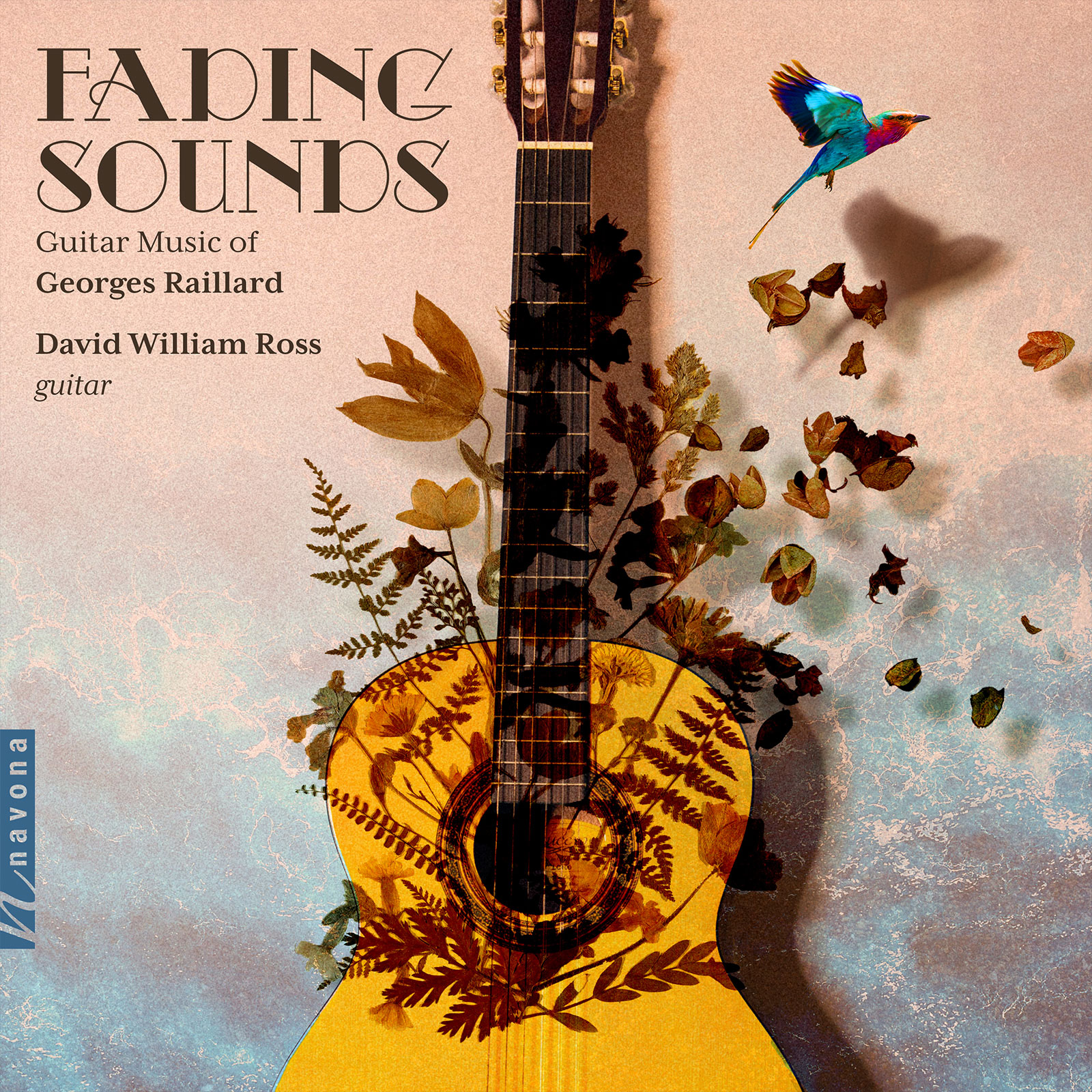Fading Sounds
Georges Raillard composer
David William Ross guitar
On FADING SOUNDS, composer Georges Raillard turns a creative eye towards the simple wonders of the world with a deep appreciation for the fleetingness of each moment. The aptly titled album presents 10 works for solo guitar, each of which take full advantage of the instrument’s tone and timbre. As the pieces conjure images and memories of landscapes, experiences, and thoughts, every cheerful chord, harmonic passage, and lyrical progression inevitably ends with a haunting resonance that leaves the ear wanting more. The compositions are dexterously played by guitarist David William Ross, whose gentle confidence on the instrument lets Raillard’s musical ideas ring out with clarity and precision.
Listen
Stream/Buy
Choose your platform
Track Listing & Credits
| # | Title | Composer | Performer | |
|---|---|---|---|---|
| 01 | Coastal Rhapsody | Georges Raillard | David William Ross, guitar | 3:54 |
| 02 | In the Pine Wood: I. | Georges Raillard | David William Ross, guitar | 3:27 |
| 03 | In the Pine Wood: II. | Georges Raillard | David William Ross, guitar | 1:09 |
| 04 | In the Pine Wood: III. | Georges Raillard | David William Ross, guitar | 2:16 |
| 05 | In the Pine Wood: IV. | Georges Raillard | David William Ross, guitar | 1:59 |
| 06 | In the Pine Wood: V. | Georges Raillard | David William Ross, guitar | 2:31 |
| 07 | Fading Sounds | Georges Raillard | David William Ross, guitar | 5:16 |
| 08 | Cut Flowers | Georges Raillard | David William Ross, guitar | 2:27 |
| 09 | November: Winter Threat I. | Georges Raillard | David William Ross, guitar | 4:47 |
| 10 | November: Winter Threat II. | Georges Raillard | David William Ross, guitar | 3:31 |
| 11 | Diverging Spirits | Georges Raillard | David William Ross, guitar | 9:36 |
| 12 | Lighthouse | Georges Raillard | David William Ross, guitar | 2:36 |
| 13 | Stray Thoughts: I. Digging in the Backgrounds | Georges Raillard | David William Ross, guitar | 4:08 |
| 14 | Stray Thoughts: II. Escaping Bird | Georges Raillard | David William Ross, guitar | 4:55 |
| 15 | Stray Thoughts: III. Indian Siesta | Georges Raillard | David William Ross, guitar | 3:07 |
| 16 | Feverish Freezing (Nocturne) | Georges Raillard | David William Ross, guitar | 4:32 |
| 17 | Alive | Georges Raillard | David William Ross, guitar | 7:05 |
Recorded December 2021 in Keene NH
Recording Session Producer & Engineer David William Ross
Executive Producer Bob Lord
Executive A&R Sam Renshaw
A&R Director Brandon MacNeil
A&R Chris Robinson
VP of Production Jan Košulic
Audio Director Lucas Paquette
Mastering Melanie Montgomery
VP, Design & Marketing Brett Picknell
Art Director Ryan Harrison
Design Edward A. Fleming, Morgan Hauber
Publicity Patrick Niland, Aidan Curran
Content Manager Sara Warner
Artist Information

Georges Raillard
Georges Raillard was born in Basel, Switzerland in 1957, where he completed his education, culminating in studying foreign languages at the University of Basel. From 1983 to 2001 he resided in Madrid, Spain, where he worked as a language teacher, translator, and writer. From 2001 to 2019 he worked as a writer, composer, translator, and archivist, mainly in Basel. Returning to Madrid in 2019, he has since been focusing on his artistic endeavors.

David William Ross
David William Ross is a New England–based guitarist with roots in both classical and jazz. His recordings and performances have been lauded for their sensitivity, virtuosity, and depth of all-around musicality. Ross frequently works with composers and is active in cultivating new repertoire for the guitar. He has premiered works by Frank Wallace, Georges Raillard, Ferdinando DeSena, Peter Dayton, Pierre Schroeder, among many others. Ross’ work as a session player has led to an extensive working knowledge of the recording studio. He has developed an approach to engineering and recording that not only serves as a means to capture and present music but also as an artistic tool in its own right.
Notes
The melodic, rhythmic, and harmonic guitar pieces contained within this album are all musical constructs and in no way reflect the concepts and ideas expressed by their titles. The titles were added only after the pieces were finished, relating their moods and atmospheres to landscapes, experiences, memories, and thoughts.
The title, FADING SOUNDS, refers to the titular track contained on the album, however we also hear sounds fading into silence in many other pieces. Silence has no quality in itself; it is only the longing memory of sounds fading.
— Georges Raillard

